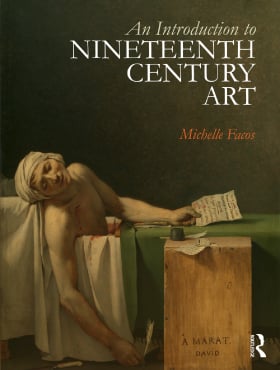Colonel Mordaunt’s Cock Match
Documentation:
Griselda Pollock addresses issues of colonialism and gender in Zoffany’s Colonel Mordaunt’s Cock Match :
“Zoffany’s painting visualizes this created [sexual] ‘difference’ on the formal level by clear demarcation of the lean, taut, stable, unadorned masculine body of the British officer, John Mordaunt, and the kinetic excess of the draped, sizable, and demonstrative Nawab, whose artistic connoisseurship and cultural patronage is erased in this double move of orientalizing feminization. The Nawab’s considerable girth is swathed in flowing garments of a soft and transparent fabric that swirl awkwardly at the groin in a manner too pointed and too unnatural to be ignored.”…
“A final look at the painting done for Warren Hastings reveals that the whole image begins to tilt so that we might also read a creation of an inner stage, on which the central figures of power, the Nawab and his advisors, encounter the military and civilian personnel of the growing British settlement while the Indian community as a whole is reduced to passive spectatorship, exotic decoration, entertainment, and sex, and positioned as lowly, reminiscent of the unruly mob elements of the Hogarthian crowd. The more one contemplates the order that underpins the apparent dynamism of the painting, the more the organizing power of the military red jacket and the simple white undergarments combined with Zoffany’s skilled portraiture establishes the dominance of the inner space of power by the Europeans leaving the impressive Nawab a diminished figure, paling at its center.”
Griselda Pollock, “Cockfights and Other Parades: Gesture, Difference, and the Staging of Meaning in Three Paintings by Zoffany, Pollock, and Krasner,” Oxford Art Journal, vol. 26, no. 2 (2003): 156-7, 159.
Many of the figures in this painting can be identified, not always with happy consequences for the sitters:
"Another celebrated production of this period is the picture of Colonel Mordaunt's Cock Match at Lucknow, painted in 1786, and well known from the engraving of it made by Richard Earlom. There are two versions of the picture extant: one, which belonged to Warren Hastings and is now [1931] the property of Sir George Sutherland, and another, which was presented in 1817 by the then Nawab to Mr. Richard Strachey, the British Resident at Luchnow...Earlom's engraving was made from Hastings's picture. In the center we see the Nawab and Colonel Mordaunt facing each other. Slightly behind, but appearing between them is Salar Jang, the Nawab's uncle, while looking over that individual's right shoulder is the Nawab's minister, Hasan Raza Khan. Colonel Martin is seated on a sofa to the right of the group. Zorrany has introduced his own figure, in the right-hand top corner of the picture, seated, and leaning his arm over the back of his chair, while standing on his right is his brother artist, Ozias Humphry. In the hight-hand bottom corner, standing and holding a cock, is Robert Gregory, the Assistant to the British Resident at Lucknow. His appearance in the picture is alleged to have had a disastrous influence upon his fotunes. The story foes that his father, after more than once discharging his son's cockfighting debts, threatened him that, if he ever took part in such games again, he would disinherit him. It is said that the old gentleman, happening to see Earlom's engraving in a shop window in the Strand, recognized his son's figure and...went home in a rage and carried out his threat."
William Foster, "John Zoffany in India, 1783-89," Journal of the Royal Society of Arts, vol. 79, no. 4095 (15 May 1931), 603-4.
About the Artist
Died: Strand-on-the-Green (near Kew), London, 11 November 1810
Nationality: German

 Buy the Book
Buy the Book